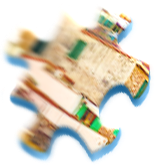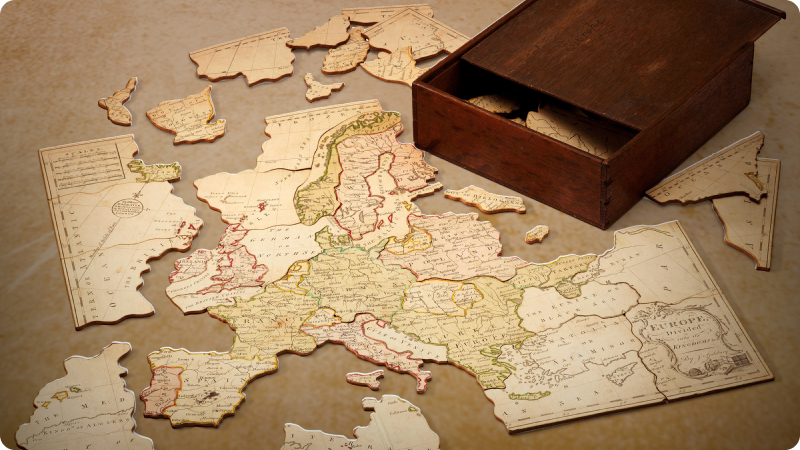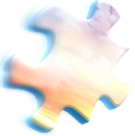It seems like jigsaw puzzles have been around for years – and that is true. Our grandparents did jigsaw puzzles in their free time, their parents and grandparents, too. But who invented the famous game of jigsaw puzzles and when? What was the first jigsaw puzzle like? Let’s find out!
The first jigsaw puzzle ever
Jigsaw puzzles weren’t always made out of cardboard – and also they didn’t have those puzzle pieces cut into square shapes.. The first jigsaw puzzle known was made by John Spilsbury in the year 1766, which makes jigsaw puzzles more than 250 years old. But you probably wouldn’t recognise them, because puzzle pieces were made out of wood and the puzzle pieces were a much different shape.
The first jigsaw puzzle that he made was a wooden puzzle that represented the map of Europe. He cut out European countries out of a map made out of wood and later used them to help children study geography. Spilsbury used a saw to dissect the parts.
He was the first one to name them, too – he called them “Dissected Maps”. These dissected maps were so popular that Spilsbury started selling them, creating new versions of the jigsaw puzzle maps of Africa, Asia, America and other countries and continents.
The cut out of wood jigsaw puzzles trend was a winner. John Spilsbury continued carving his jigsaw puzzles pieces until he passed in the year 1769. His wife Sarah May and later on her second husband Harry Ashby, who also was John’s apprentice, continued running the Spilsbury’s jigsaw business.
The rise and fall of wooden puzzles
Let’s rewind to the beginning of the 20th century. Suddenly, wooden puzzles were not only a studying tool, but a trending leisure time activity.
By the year 1908 everyone became obsessed, but jigsaw puzzles had to be made out of wood and carved one puzzle at a time, making the price of them quite high. A typical jigsaw puzzle back then cost around $5, and if we were to convert this price to real-time currency, each jigsaw puzzle would cost around $135. That’s quite a lot for a puzzle, and that’s why they were considered an upper-class hobby.
The design of jigsaw puzzles back then was different from what we have today. Wooden puzzle pieces were cut exact to their color lines, and some type of saw was used to do that. There were no pictures on the box, only a name of the puzzle. Also, jigsaw puzzle pieces did not interlock like they do today, maybe because of the way puzzle pieces were cut, maybe it was on purpose – so it was very easy to ruin the whole puzzle by moving it.
As the time went by, the jigsaw puzzle obsession grew – and it peaked in the year 1933. The Great Depression lead to an all-time highest unemployment rate, and jigsaw business owners saw an opportunity in that. Puzzles became cheaper, more and more people found themselves cutting them out of wood and selling them locally. Wooden puzzles were sold in quantities of 10 million puzzles per week.
After the World War II, however, wooden puzzles became outnumbered by a lightweight, easy to produce cheap new version – cardboard puzzles.
The new black
The companies saw the trend for cardboard puzzles and rose to the occasion. A cardboard jigsaw became more popular than a wooden jigsaw, all thanks to the quick improvement of lithography and new cutting and dying technologies.
But wooden jigsaw puzzles, despite their low moments, are still here and still remain a more expensive, more unique type of jigsaw puzzles. They are usually hand-made, allowing the crafter to pick a specifically used type of wood for you, carve out your name, date of birth or anything you ask for right into the jigsaw puzzle pieces pattern. They are painted and cut specifically for you. With cardboard puzzles such a handmade experience usually is not an option, because they are made with a laser machine.
But there are, of course, mass-produced wooden jigsaw puzzles. You may have seen big wooden puzzle pieces in a jigsaw puzzle for children. It’s the best option for little ones: the wood is nice to touch, big jigsaw puzzle pieces are hard to lose and you can’t swallow them.
Since the 1960s both wooden and cardboard puzzles have transformed and grown, and now there are all kinds of jigsaw puzzles for everyone.
- Puzzles for children with big cut-out pieces,
- Puzzles for adults with smaller pieces,
- Puzzles with pieces cut out of plastic, wooden pieced, cardboard pieces,
- Three dimensional puzzles,
- Two dimensional classic puzzles,
- Handmade puzzles with handmade pieces,
- Store puzzles,
And a lot more!
The jigsaw trend is on the rise yet again. This classic hobby is both challenging, fun and can bring the whole family together. It doesn’t matter whether you prefer a jigsaw puzzle made out of wood or a jigsaw puzzle made out of cardboard, it’s equally good for you and your brain!





